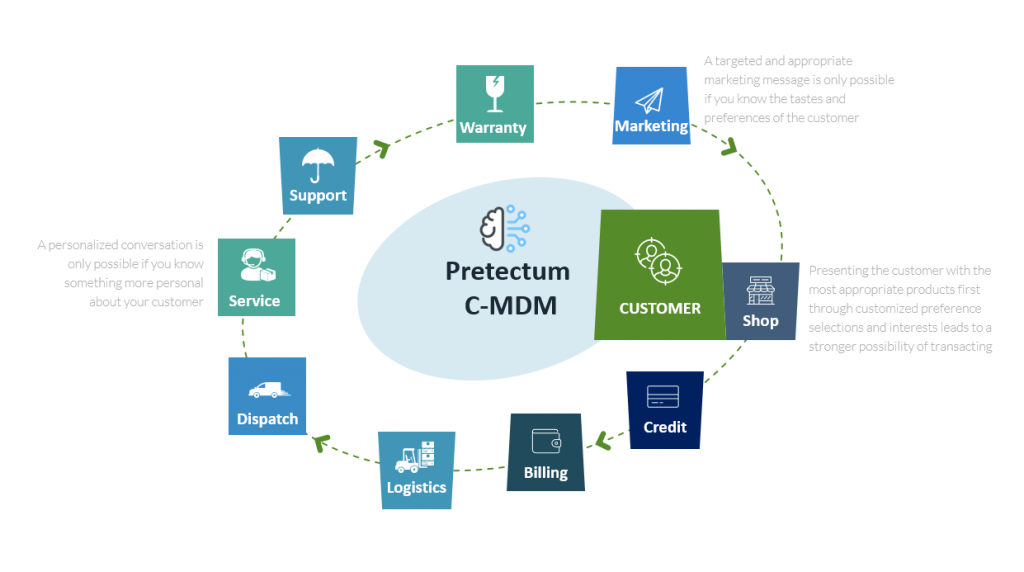Applying data management best practices to the accounting function is one way to help provide some assurance that customer master data records are correct and up to date. A well-curated set of customer master data records will reduce errors, disputes and unauthorized discounts and risky credit lines.
Here are a couple of process activities in the accounting function that benefit from the good practice of master data governance using master data management.
Customer onboarding
The onboarding process is critical to new customer relationships. Setting up the customer master data correctly the first time with up-to-date contact data, billing and contracts or service information and valid Tax Identification Numbers or VAT/GST information is key to establishing and maintaining a useful customer master from an accounting perspective. Identifying the special credit terms, who is responsible for the relationship and holding data submission history and approval is essential. This is especially true if your accounting operations are automated or you’re trying to maintain a digital as opposed to paper-based record. Your MDM is not your system of record but critical pieces of the customer master can start their life in the MDM and then be syndicated to downstream systems like billing and accounting.
Periodic review
On a regular basis, there should be an inventory of the customer master data to ensure compliance and adherence to all necessary local and national permissions, tax and documentation requirements. Of particular importance is the contact information. This should all be correct and current. A periodic refresh of the customer master helps to avoid problems and keep the accounting operations function running most efficiently. If you have hundreds of contacts, in a year you may have a large number of accounts which need to be updated. This can be a daunting task if you don’t have up-to-date emails, phones and other contact address data for your customers, further, if your customer has passed away or has not engaged in a transaction with you for years, this can be an embarrassment if you send an update to them only every few years. Further, dormant accounts could be misappropriated and used for fraudulent activities.

Reactivating the dormant customer account
It is good practice to change the status of customer accounts that look like they are no longer active. It might happen though that you decide at some point that a dormant account needs to be ‘woken-up’.
When dormant accounts are reactivated, it’s very important, just as with onboarding, to set up the customer master data for reactivated accounts correctly. This will be especially important if you have automated or semi-automated accounting processes that have been implemented since the customer account fell into disuse.
Data Refresh
The Pretectum CMDM enables you to refresh your systems and databases with cleansed and up-to-date master data for your customers. We recommend that you implement a strategy of regularized synchronization between your CRM, ERP or Accounting system with the Pretectum CMDM so that other business units can contribute to the quality of the accounting customer master and this arrangement can be reciprocated with the Pretectum CMDM as the syndication hub.
We consider regular synchronization to be a best practice. Synchronization shouldn’t be considered something that you only do occasionally, or when problems arise after the fact. Synching should be part and parcel of your accounting data management operation. Working with other stakeholders, the accounting team should employ best practices whenever they can to ensure the best possible data management approach.
If you would like to learn more about how you can benefit from customer MDM in your accounting practice please do reach out to us for more information.


